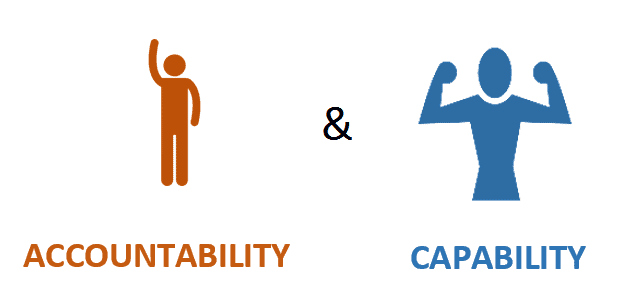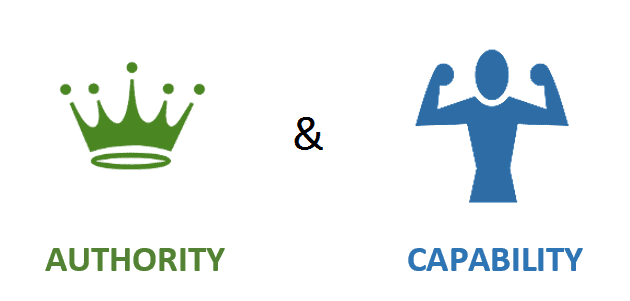Trust is the foundation. Trust is the glue. Trust is the magic pixie fairy dust that makes your business better. We all love trust– all the kinds of trust – trust that people will do what they commit to do, trust that people will keep promises, trust that people will behave consistently, and trust that people will seek to benefit the greater good with their decisions. When you have it, trust feels good.
Lacking trust costs money.
Imagine running your business when you can’t trust that people will do what they commit to, keep promises, behave consistently, and seek to benefit the greater good with their decisions. Ouch. When an organization recognizes that it has low trust, huge economic consequences can be expected. Everything will take longer and everything will cost more because of the steps organizations will need to take to compensate for their lack of trust.
So trust. Yay trust! How do we increase it?
Well, that’s where things get a little unclear.
Is it heroic efforts on the part of the business’ leaders to demonstrate the EQ, humility, and empathy that match today’s ideal model of the best-ever-leader-not-manager? It sounds good and warm and fuzzy to have EQ, humility, and empathy. Yet, normal humans, when they gain in power, tend to experience a reduction in the need to demonstrate these very traits. So it seems true, but something is amiss.
Maybe it boils down to having the right character and personality traits? It’s common to think that the cause of trust problems is one of character and personality. If we look around at the best and most effective leaders, wouldn’t all of our most effective leaders be the very best at one particular set of traits then if that is truly the differentiator. I don’t know about you, but I don’t see one style and one set of personality traits being the best. I also see less-effective managers display some otherwise honorable traits. This should add up if it’s a real effect, but it doesn’t.
High EQ, empathy, character, and a pleasant personality are desirable things to have in our leaders. Between one effective leader and another, we’d surely prefer to work with someone who has all of these things. But pleasing to work with doesn’t necessarily mean more effective. Don’t go thinking this means that being purposely unpleasant to work with is the answer, because that misses the point.
The point is designing your organization in a way that maximizes trust with a wide array of leadership styles and personality types.
Designing for trust.
I don’t love solutions that call on heroics and overcoming our natural drives. I don’t love solutions that moralize success and failure by implying that the existence of problems are necessarily the cause of somebody else’s moral failings. For example, when a bank’s practices place risk on future tax-payers, we jump to an answer that people in banking are just plain greedy and horrible. This finger-pointing might feel good (I do it too!), but it distracts us from the real causes of the problem.
Sure, there are likely greedy people in banking. There are greedy people everywhere. But greedy people aren’t so much the cause as are the existence of financial institutions that became “too big to fail” and trading practices that disconnected risk and reward. Well, that’s banking, you might retort. I’m not in the banking business, or if I am, it’s a small bank and we’re ethical. We aren’t too big to fail. But guess what?
The same unfortunate dynamic is at work in your business.
When I see this moralizing, I am suspicious that we’re missing something big- something systemic.
Like a fish doesn’t notice the water it’s swimming in, this big creator of organizational trust could be hiding right here, all around you. I propose, with an easy to remember algorithm, what that systemic thing is, so you can see the water.
Here’s the algorithm that, when put into practice, leads to higher trust.
This algorithm is neither gospel, nor conclusion. This is an idea. A model that might be useful in its simplicity and surprising in its comprehensiveness. A model that, when applied with rigor, will have a bigger impact on organization-wide trust than anything else you can do. There are other things you can do that also make a difference, but this one makes the BIGGEST DIFFERENCE.
Here it is. The organizational trust algorithm™.
The more accountability, authority, and capability are synced up for each-and-every-role in an organization, the greater the trust. Here’s a graphic to help you pick up what I’m putting down.
What does this even mean? It might even sound a little harsh and bureaucratic. A lot of people associate the word trust with softer ideas and calls to be more empathetic and humane, with calls to hug and sing kum-ba-yah. And here I am talking about mundane-sounding words like accountability, authority, and capability. But I tell you, accountability, authority, and capability is like the water the young fish couldn’t see in David Foster Wallace’s fish parable.
Let me break it down for you.
An algorithm is a of a set of rules that precisely defines a sequence of operations. Hence, a trust algorithm™is a set of rules that enhance trust. I should point out that an algorithm is usually applied in a computerized or otherwise automated fashion.
Here’s where I break with tradition, because a computer can’t suss out these calculations. You are going to have to use you and your leaders’ human brains and human judgments to determine if the accountability equals the authority of each role. You are going to have to use you and your leaders’ human brains and human judgments to determine if the capability of the person in the role matches the authority and accountability designated to that role.
But don’t sweat it. I’m going to help clear the fog for you.
First, let’s define our terms.
![]() Accountability – A person has accountability when they can be called to account, or held responsible, for their actions by another individual or body authorized both to do so. Accountability also comes with recognition for successful completion of those actions they are accountable for, although it’s the other side of the formula that we think about most.
Accountability – A person has accountability when they can be called to account, or held responsible, for their actions by another individual or body authorized both to do so. Accountability also comes with recognition for successful completion of those actions they are accountable for, although it’s the other side of the formula that we think about most.
![]() Authority – A person has authority when they have legitimated power, that is to say, power vested in a person by virtue of their role, to expend resources. These resources may be material, technical, and/or human. Informal power to expend resources that is not legitimated is not authority—it’s manipulation.
Authority – A person has authority when they have legitimated power, that is to say, power vested in a person by virtue of their role, to expend resources. These resources may be material, technical, and/or human. Informal power to expend resources that is not legitimated is not authority—it’s manipulation.
![]() Capability – This refers to the ability of a person to do the required work of a specific role at a given level at the present time. It is a function of the individual’s skilled knowledge in the work area, their complexity of work processing, and how much he or she values the work of the role, and physical ability to carry out the required behaviors.
Capability – This refers to the ability of a person to do the required work of a specific role at a given level at the present time. It is a function of the individual’s skilled knowledge in the work area, their complexity of work processing, and how much he or she values the work of the role, and physical ability to carry out the required behaviors.
(Definitions informed by Elliott Jaques’ definitions of these terms from the glossary of his book titled “The Life and Behavior of Living Organisms.)
The more these three things are equal and in sync, the better your business’ foundation of trust. Make sense? We should be simpatico so far. I don’t think I’ve said anything controversial here.
All the ways it goes right and wrong.
Now let’s talk about how it works when each pair of variables is in sync, and the symptoms of when they are misalignment. See if you recognize some of these conditions from your business.
When Accountability and Authority are in Sync
When accountability and authority are aligned, the person in the role can do the things that enable them to succeed or fail. They can’t point to system-level problems and say, “I could have succeeded if only…” This is so obvious, it’s tempting to believe that it’s commonly in place. Hold that thought while we describe the symptoms you see when accountability and authority get out of sync.
When Accountability and Authority are Out of Sync
When accountability > authority, we experience stress and frustration, because we’re being held to account for outcomes over which we have little control. Not enough control. Success or failure feels more like a function of luck and accident. In order to try and gain some control over our destiny, we find it necessary to rely on coercion and influence along informal lines to get things done. It creates a web of deceit and confusion. It creates poisonous “politics”—the kind of politics that your well-meaning colleagues joined your smaller business to avoid. And that’s a tragedy.
When authority > accountability, we have a different set of symptoms. The problems mainly arise when things aren’t going well, because it’s the lack of consequences that encourage actions that are dysfunctional, serve the wrong end, and are risky-to-the-business. This divorcing of benefit and risk is called moral hazard in economic circles, and, far from being an irrelevant abstraction, this concept applies when your people and operations practices cause authority to outpace accountability. For example, when a team member has the authority to make decisions about the use of resources that cause obstacles for success to another part of the business. We’ve seen these power dynamics happen in banks (Wells Fargo fiasco). Any time you hear rumblings that so-and-so doesn’t have to play by the same rules as other people, you might have the same dynamic in your business. Don’t let it go unaddressed.
When Accountability and Capability are in Sync
When the accountability of the role is matched by the capability of the person, you have role / person fit. The role is the right size, the person has the necessary skilled knowledge, and the person is willing to do the work. You have the right person in the right seat. Good results are likely to follow.
When Accountability and Capability are Out of Sync.
When accountability > capability, it’s a bad situation. In the absence of dumb luck, the person is doomed to fail. The person is in over their head because they lack the ability, willingness, and or interest in the requirements of the role. When you have these symptoms as a result of over-promotion, you have what is called the Peter Principle. If the in-over-their-head person is a manager, they will be unable to give proper context to team members, and the team loses connection to larger goals and strategies. Signs of this problem are a kind of tunnel vision on the part of the leader and an inability to adjust in the face of normal change. They will swear that changes were impossible to anticipate and finger-point at their peers and outside influences as the cause of their leadership errors. These behavioral frustrations quickly turn into top- and bottom-line business problems. Not good!
When capability > accountability, you have an entirely different set of problems. At first glance, you might even think that having excess capability would be a good thing. Guaranteed success! But no. It won’t be long before boredom sets in and the over-capable colleague expands the role without permission and perhaps without awareness that they are doing so. Resources will be applied where you don’t intend them. They won’t “roll up their sleeves” and do the doing— inclined, instead, to do the planning and delegating. These things are frustrating for the manager of the over-capable person. As a result, the manager often succumbs to the temptation to paint the over-capable colleague as insubordinate, NOT a team player, and a “poor culture fit.” It’s an uncomfortable situation that breaks down trust and relationships, typically ending with a high-capability person leaving your business with a bad taste in their mouth. They probably won’t say nice things on Glassdoor.
When Authority and Capability are in Sync.
People can do what they are authorized to do. People are willing to do what they are authorized to do. The talent, the skills, the interests, of the person is matched up with the nature of the work. The person is going to feel good about the work they do. They will feel adequately challenged. The need to use informal methods of influence will be minimal.
When Authority and Capability are Out of Sync.
When authority > capability, you end up with either a little dictator or general ineptitude. Which option you get depends on the leadership style of the person. In either case, you don’t get the results you are paying for. If you are the manager, you might find yourself doing the employee’s work for them and pulled into the weeds a lot more than you want. If you report to someone who has more authority than capability, you’ll feel adrift because they don’t make decisions, or you feel micro-managed to the ends of your patience. In either case, making this mistake is a great way to get rid of highly capable people, because capable people have alternatives to working with incompetent people.
When capability > authority, everything looks like it’s coming up roses. At first. Then by about 6 months in, you start to see signs of the person working around the structure rather than with it, manipulating situations so that they are more interesting for them. This scenario leads to people to take the skill of influencing-without-authority well past the healthy point. If they are blocked from doing this, they’ll complain about boredom and the decisions made by their peers and bosses.
The relevance of the trust algorithm™ to your business.
At least some of the symptoms of accountability, authority, and capability getting out of sync should sound familiar. I’ve never come across a business that doesn’t have pockets of these symptoms. In my role, people tell me stories about how things go wrong where they work. They tell me their frustrations and criticisms, even when they mostly love their colleagues and their jobs. Every criticism and complaint I hear has, at its roots, a failing of the trust algorithm™. Every. Single. One. We need to do something!
Can these problems ever be solved?
It’s hard to solve these. For sure. It takes constant vigilance with the trust algorithm™ at the forefront of our minds. What if– we fear– it’s just too hard? What if these problems can’t be solved, so why try? Maybe it’s better to just be pragmatic and do things the traditional way.
Which is fine if you don’t have high expectations for your business.
There are reasons that we regularly fail to notice when the trust algorithm™ gets a little off kilter. These reasons include mental traps that hide the truth from our view if we aren’t careful.
So you don’t get caught in the snake pit, let’s cover some of the big ones.
Common traps that distract you from the problem.
TRAP #1: Trust because positional authority.
When confronted with lack of trust, some leaders take it personally and blame the employee. They worry, “What if people don’t trust me as a leader?!” That would be awful! They should trust me BECAUSE I’m the leader, right? If capability is synced with authority of all leaders’ roles, that mindset will be mostly fine. But you wouldn’t want your judgments to NEVER be questioned, would you? Ever? If you see this dynamic occur in your business, it’s a sign to use the trust algorithm™ to see if you’re missing something.
TRAP #2: The role of personality in conflict.
When people describe workplace conflicts and breakdowns in trust, it is often couched as a “personality conflict.” That’s because the tenor and tone of the conflict takes the shape of the personalities involved. It’s highly visible. Personality is hard to ignore. Yet, if you run the conflict situation through the trust algorithm™, you’ll almost always find that the cause of the conflict is a breakdown between accountability, authority, and/or capability. What about personality? Doesn’t that matter? Less than you think.
TRAP #3: We just need to learn conflict resolution skills.
Chalk this one up as another band-aid to fix a broken arm. This isn’t to say that people shouldn’t have conflict resolution skills. They should. Having them is part of the capability requirements for any leadership role. Most any role, actually. Sometimes a conflict is nothing more than a skills issue and, to solve it, people involved simply need to learn conflict resolution skills.
Guess what the best conflict resolution skill is? It’s using the trust algorithm™. Yep. Solving an endemic trust problem with conflict skills training is like doing laps so you can swim upstream and go backwards slower. When authority, accountability, and capability are synced, it’s like swimming with the flow. And that’s better.
TRAP #4: Confusing authority and accountability.
We already defined the terms, so I won’t do that again here. The trap is that, in our common parlance, we use the words authority and accountability interchangeably. We aren’t precise with our language. Which is unsurprising, because it’s hard to be precise with our language all of the time, but this particular brand of confusion fogs up our organizational glasses. For example, putting words on a job description and an organizational chart might grant accountability, but it doesn’t ensure authority. Get clear on the difference between these two concepts.
TRAP #5: Misunderstanding what capability means.
The biggest mistake is believing that training can solve any capability mismatch. Training helps build skilled knowledge, presuming the person values the work and cognitive power. When I use the word capability here, I mean more than just skilled knowledge. In the definition I provide earlier in this article, there are many components to capability. Some kinds of capability gaps can be rectified with training and experience, while some cannot. Sometimes, a poor capability fit can be solved by re-working the role to better match the person’s special stack of talents, interests, and abilities. Sometimes not.
Let’s wrap this up.
So where does this leave us? We’ve discussed the components of the trust algorithm™— authority, accountability, and capability. We’ve talked about what it looks like when the components are in sync. We’ve talked about the symptoms that emerge when they aren’t, so you can recognize them in your own business. We’ve described the common mental traps that fool us into misdiagnosing what are trust algorithm™ misalignments.
How do you apply the trust algorithm™ in YOUR business?
This algorithm is a simple, comprehensive heuristic, but it requires that you convert the concepts into concrete observations and actions. I’ve attempted to give you enough guidance to reframe almost any people problem you see in your business, but providing specific actions to apply in your business are beyond the scope of this article. I aim to help you bypass the trap of solving symptoms and seeing the same problem-themes occur again and again.
When you think about people and trust problems through the lens of the model, you solve people problems by getting to the root of the issues. You can do it! Post the algorithm in a place you’ll see it every day, so it’s a part of how you think about your people and operations. When you need help, call me.







